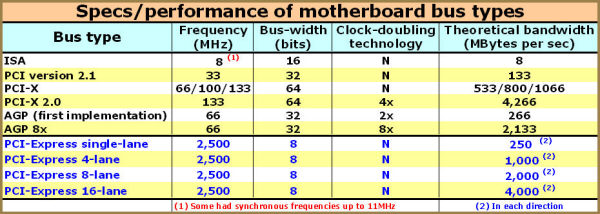Intro
Increasing
numbers of motherboards carry PCI Express slots. James Morris explains
why this new serial bus standard is replacing the older PCI parallel
bus and how the move benefits video editors
When the PCI bus first took over from ISA - about the time that Intel’s original Pentium processor arrived - it seemed to offer enough bandwidth for a good while to come.
Well, although that did turn out to be the case, today, PCI is no longer able to handle the throughput of the latest high-performance cards and programs. Processing sound and video place considerable strains on PCI and are among the tasks that its successor, PCI Express, are intended to handle better.
PCI offered far greater bandwidth than ISA. The most prevalent form of PCI has a 32-bit/33MHz bus and offers a theoretical maximum throughput of 133MByte/sec. Standard ISA, in contrast, is a 16-bit/8MHz bus capable of a theoretical 8MByte/sec of bandwidth, but much less in practice.
When processor speeds were measured only in a few hundred megahertz, PCI offered plenty to be getting on with. But once processors became able to handle data more quickly, the PCI bus started holding back some potential new capabilities.
With 3D acceleration beginning to take off and stoke the fires of the PC gaming market, greater graphics bandwidth to CPU and to memory was required. So the AGP bus was born.
This offered a direct 66MHz/32-bit connection to the system bus via the GART (graphics address remapping table), and graphics cards were the first mainstream adapters to vacate the PCI bus to avoid congestion.
The basic AGP specification doubles the bandwidth of PCI to 266MByte/sec, and successive levels of clock-doubling technology eventually increased this to 2,133MByte/sec for AGP 8x.

the most popular peripheral adapter bus standards









